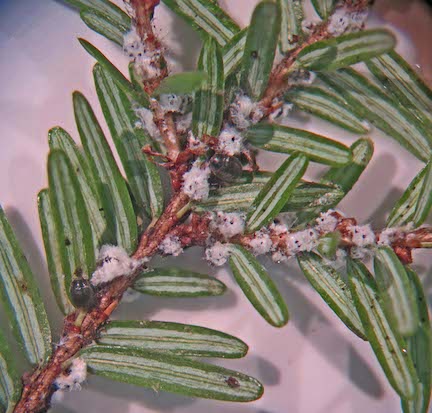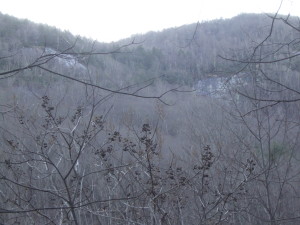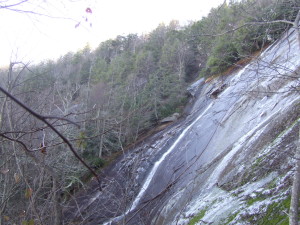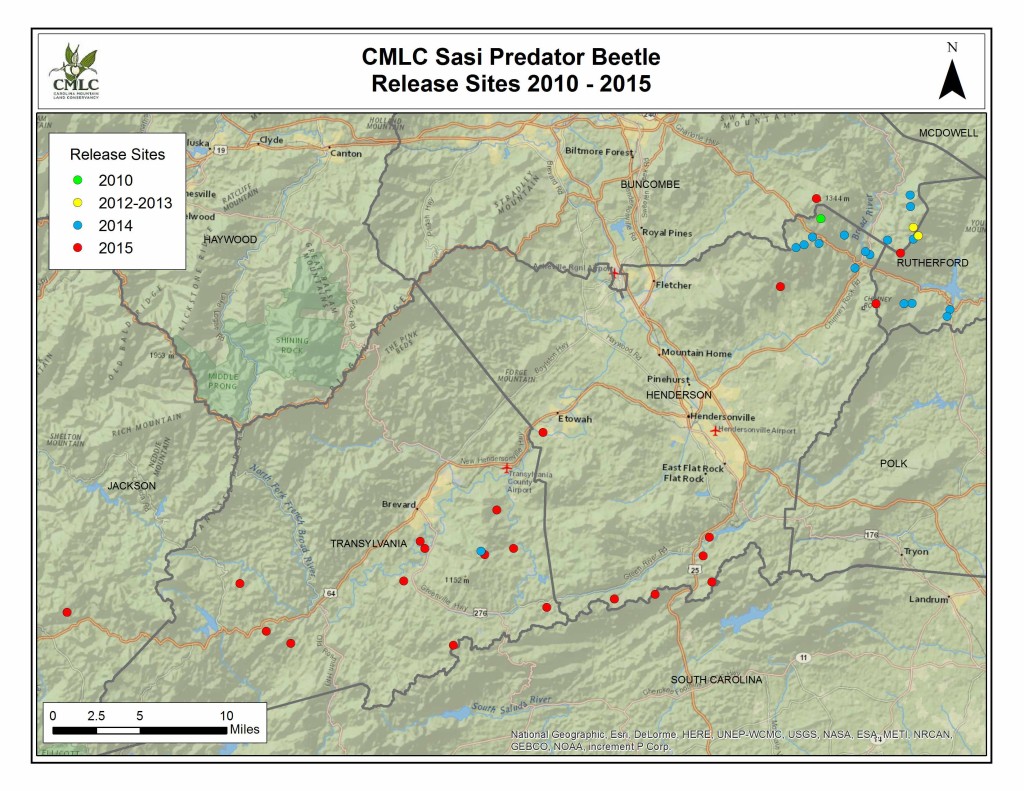Community & DIY Predator Beetle Releases
How to Protect Hemlocks in your Community
Do it Yourself or Work with Others?
Releases of the Sasajiscymnus tsugae (aka Sasi or St) predator beetle in residential areas will have an impact on individual and forest hemlocks across entire neighborhoods and communities! And what a great “environmental investment” strategy to support and protect local hemlock ecosystems!
Once released, these highly mobile predators will fly from tree to tree, feeding and laying eggs wherever they find Hemlock Woolly Adelgid ovisacs. The emerging St beetle larvae feed voraciously on HWA eggs, larvae and adults over both of the two HWA reproductive cycles, ranging from March thru July. The St larvae develop (pupate) into new adults and begin their own feeding and reproduction, adding a second generation of HWA predators. Meanwhile, the mature St adults keep searching for new sites for feeding on HWA and egg-laying to increase the predator population – thereby reducing the HWA population.
Sasajiscymnus tsugae is the only HWA predator beetle which is both known to be effective, and commercially available for private landowners in the eastern US. To learn more about the characteristics of different HWA predators, see “Choosing an HWA predator”.
Procedures for a Do-It-Yourself Predator Beetle Release
With a little advance planning (during the period between November and Spring), a Sasajiscymnus tsugae predator beetle release can be as easy as One-Two-Three:
One: Get a map or plat of the area that you would like to protect. You don’t need anything fancy – an old survey plat or a printout from your county GIS records will do just fine. Then do a walk-about (or drive-about), mapping the hemlocks in your target area on this paper document.
Two: Note the number, size and health of the hemlocks at the locations that you have identified, and check for the presence of white HWA ovisacs (which should be visible during the Nov-February period). Note the “food supply” for the predator beetles on your map of potential beetle release sites.
Three: Decide how many Sasajiscymnus tsugae beetles you want to release and pick the sites that will achieve best physical coverage of the area. Then decide how many beetles you want to release at each site. For practical purposes, this should not be less than 100 per release area. (The PA Predator Beetle Lab – Tree-Savers.com – will offer free phone consultations on predator beetle numbers and release strategies for your site.)
Finally, when your beetles arrive in the Spring, put them out on your hemlocks, ASAP. For large trees without lower foliage, you can attach the containers directly to the tree or use #4 cone coffee filters. But if there is lower level foliage with HWA ovisacs present, just apply the beetles directly to the infested branches with a cheery “Bon appetit”!
If you don’t want to bother with a site survey, then you can release all the beetles in one central hemlock location that has an abundance of HWA present. This “beetle food” will stimulate beetle reproduction in that location – the more food present, the more eggs will be deposited. And from there, the predator beetles will do the scouting and distribution work for you!
Doing Predator Beetle Releases with Others
Getting municipal and local “green” groups involved can greatly expand the scale and funding of predator beetle releases. So look to local groups that have either environmental or economic interests in preserving our native hemlock environments. Whether it’s a conservation group, trout fishing club, local park, camp or land trust, all are candidates for participation in a community-based biological control effort for HWA. Remember that every participant added to your community biocontrol effort will expand the scope of HWA control for hemlocks in the places where you live, work, and enjoy.
Sasajiscymnus tsugae (Sasi/St) Predator Beetles
Responding to a Hatch of HWA Nymphs…. Let’s Eat!
Getting HWA Predator Beetles Out in Your Community – An NC Case Study
One community organization that is well-positioned to help protect our native hemlocks from destruction is your local conservation land trust. Here in Western North Carolina, I have worked with several different local Land Trusts to release HWA predator beetles. But Carolina Mountain Land Conservancy (CMLC) has participated in the most extensive biological control efforts to protect both Eastern (Tsuga canadensis) and Carolina hemlocks (Tsuga caroliniana).
In 2012, I worked with CMLC Stewardship Director Julia Brockman on a program to release 900 St predator beetles to help an old-growth Carolina hemlock colony on a recently acquired CMLC property in Hickory Nut Gorge. In 2013, her successor, Sarah Fraser, followed up on this biocontrol effort by releasing 1500 Sasi predator beetles on a larger Carolina hemlock (Tsuga caroliniana) colony, located on the same property. (See Weed Patch Mtn photos on Biological Control page.) And in 2014-15 we extended CMLC’s HWA biological control efforts to include eastern hemlocks (Tsuga canadensis) on CMLC conservation easements, offering cost-share purchases for Sasjiscymnus tsugae predator beetles with releases conducted by CMLC volunteers and staff.
Carolina Hemlock Sites in Western North Carolina
The map below shows the geographical scope of our Carolina Mountain Land Conservancy outreach to protect and restore our native hemlock populations. This effort resulted in the release of 20,000 Sasajiscymnus tsugae predator beetles on over 100 properties from 2010 through 2016! And over 10,000 of these releases were directed to the rare and reclusive Carolina Hemlock (Tsuga caroliniana) colonies, distributed along rock faces, as shown above.
Remember that hemlock restoration for all private hemlock areas in the eastern US is within our reach. And you are in a position to determine where and when this restoration occurs in your area – either by yourself or in cooperation with others!





Leave a Reply